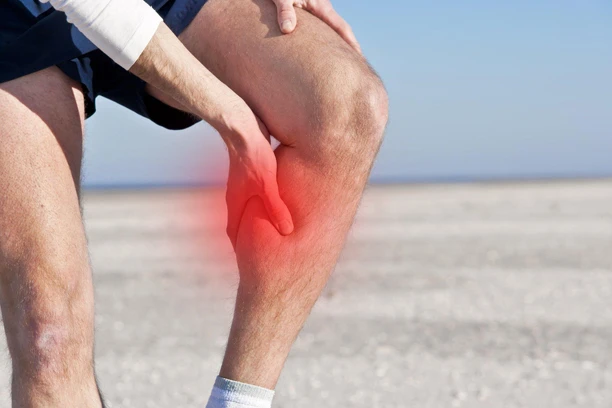Exercise has a variety of advantages. Your social, mental, and physical health are all improved by exercise. Exercise makes it easier to fall asleep and keeps your muscles and bones healthy. Many chronic illnesses, including heart disease, diabetes, obesity, depression, and some malignancies, are also prevented or treated in this way.
However, you should be prepared for some discomfort after exerting greater physical effort than usual. In order to build strength or endurance, exercise places a fair amount of stress on your heart, lungs, muscles, and bones. Normal muscle soreness and fatigue can result from this beneficial stress. It’s evidence that you took steps to enhance your health and power.
The good news is that typical soreness following exercise is not cause for alarm. And in a few days, it ought to disappear on its own. However, persistent pain or discomfort may be a sign of an injury.
Here’s how to understand the
difference between pain and, plus
some tips for managing both.
Muscle Soreness
Starting to use muscles that haven’t been stressed-out in a while might occasionally result in exercise soreness. DOMS, often known as delayed onset muscle soreness, is what this is. Small, harmless “tearing/stress” on these underused muscle fibres is the cause of this pain. Muscle strength increases as the body mends these microtears. Muscle discomfort for a short period of time after exercise is normal and healthy. After a muscle-stressing activity, normal muscular soreness and weariness reach their peak between 24 and 72 hours later. After a couple of days, it ought to disappear on its own.
The length and intensity of your workout will determine how sore you are. Additionally, it will depend on how rigorous of a workout you had and whether the activity was new to you. Your body may require more time to adjust to new activities. This is especially true for longer or more strenuous activities that require motions that you are not accustomed to.
What To Do if You Have Muscle Soreness
During the recovery period, while you have soreness, it is essential to follow the tips mentioned below:
Give the muscles you worked time to recover.
If you continue with the same intensity and type of activity too quickly, you are more likely to sustain an injury. Running a marathon, for example, can require more than a month to recover entirely from.
Stay active and keep moving until the soreness decreases or goes away.
With gentle stretching and moderate activity, DOMS frequently gets better. Complete rest may exacerbate discomfort. Consider trying a new exercise while you heal. Or, during the first few days of soreness, perform your exercise at a lesser intensity or for a shorter period of time.
Vary your activities.
On alternate days, work your legs, arms, and entire body. By doing so, you’ll be able to keep moving and build up your other muscles while giving your hurting ones a break.
Pain
Pain from injuries typically affects a particular body area, such as a tendon or a joint. Compared to muscle discomfort, it may be more pronounced and persistent. It can range from a continual “ache” (even when you are not moving), to an acute pain experienced while moving or exercising, or even after performing a specific activity. You might wake up at night from it. If you relax or sit for an extended period of time while in pain, your joints or muscles may become quite stiff. Pain from an injury might not go away by itself.
Additionally, pain can alter your gait. It could indicate an injury if you walk with a limp or prefer one shoulder over the other.
What To Do if You Have Pain
- Stop any uncomfortable activities and alter your behaviour.
For momentary pain relief from inflammation, ice can be used.
- Do not endure the discomfort.
Pushing through discomfort may make things worse and result in additional injuries.
- Obtain assistance from a medical professional.
Visit your doctor or physical therapist for an assessment and therapy if your discomfort persists even after seven to ten days.
Pain is subjective, and the severity of the injury is not always correlated with how much pain you are experiencing.
How To Make Progress
To understand the difference between pain and soreness, it is essential that you note that your body has to exert more effort than usual in order to get better physically. But you should be sure to gradually raise your level of exercise and physical activity.
Sports and exercise capacity varies from person to person. A threshold for activity is what this is. There shouldn’t be anything more than typical muscular pain when you keep inside a reasonable exercise threshold. Each person’s activity level is influenced by a variety of variables, including:
- Age.
- Technique.
- How strong you are.
- Your regular activity levels.
A safe activity threshold, for instance, would be five minutes of walking or running when someone starts a walking or running programme. The safe threshold may rise to 20–30 minutes after several weeks of gradual, incremental lengthenings. Early overexertion of the safe exercise threshold might lead to pain or damage.
To enhance your activity threshold and overall fitness safely, make sure you:
- Do not abruptly start new activities or gradually increase your intensity, distance, speed, or resistance (weight). Injury is inevitable when there is too much too quickly.
- After a break from a sport or activity, resume it gradually. Your activity threshold could be decreased if you resume an activity after an injury or a break. Don’t attempt to immediately resume the activity at your prior level. Work to gradually increase your exercise to the level of length, distance, and intensity you were at before taking a break.
- Allow your muscles to rest between strenuous activity. Slow, steady growth will be more beneficial than pushing yourself too hard, too quickly.


One Comment
Pingback: Mosquito-borne Diseases | Sujata Birla Hospital